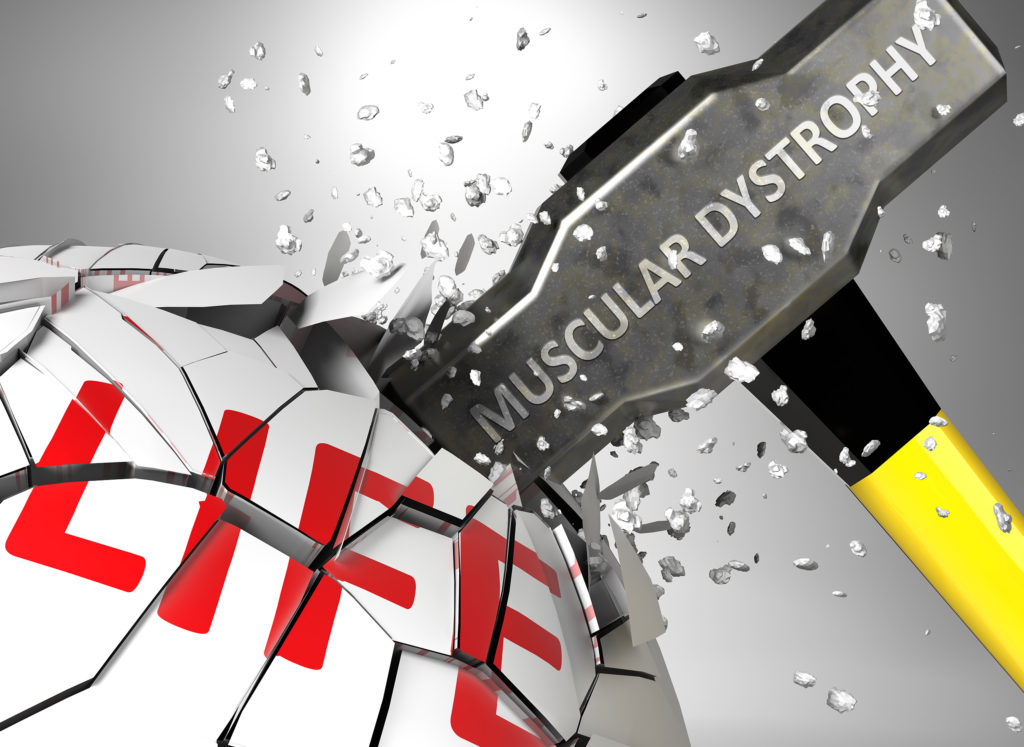Rare Yet Growing Disease Makes It Hard
To Compute Exact Numbers
There are several definitions for the compound of diseases the medical establishment has grouped and classified as muscular dystrophy. One such definition identifies them as a group of genetic diseases that cause progressive weakness and loss of muscle mass. Yet others see it as a set of inherited muscle disorders that lead to progressive weakness in the muscles that control movement. Capping it at a third definition, the literature speaks of a group of muscle diseases caused by mutations in someone’s genes.
Reasonably, this panoply of definitions mirrors the motley assortment of identified dystrophies, which top at well over 30, not including subgroups, which would make the final count skyrocket. Yet, all of them share a genetically-inherited component that causes a rare mutation affecting persons of all ages. Gravity spans from very mild —day to day movement or performance is not greatly affected— to extremely crippling. These see the muscles deteriorate rapidly while an onset of physical disabilities pile on, including, but not limited to, walking, speaking, even breathing. Ultimately, severe muscular dystrophies shorten patients’ lifespans.
Diagnosis can start during childhood, but it is not rare to see development during teens, tweens, and adulthood. Symptoms vary from type to type, but also from person to person: two people affected by the same diagnosis often generate disparate symptomatology. This and their infrequency make it hard to compile statistics of affected patients across the US. There is no comprehensively reliable information to date.
Most Common Types of Muscular Dystrophy
Each class of muscular dystrophy affects a different set of muscle groups.
- Duchenne Muscular Dystrophy (DMD): Diagnosed only in boys during childhood, this is the most common dystrophy. Fast progressing, it eventually leads to wheelchair-ridden children by age 12. Complications include scoliosis (potentially disabling curvature of the spine) and cardiomyopathy (weakened heart muscle). The cause is a lack of dystrophin, a skeletal muscle membrane protein.
- Becker Muscular Dystrophy (BMD): Ranked second most common, it also only affects boys, progresses more slowly, and is diagnosed between 11-25 years old. It affects hips, thighs, pelvis and shoulders and is not life-threatening. Also caused by a lack of dystrophin.
- Congenital Muscular Dystrophy (CMD): Over 30 muscular dystrophies affecting both sexes and diagnosed before the age of 2, including babyhood. Patients may experience seizures and the central nervous system may be affected, provoking vision or speech impediment.
- Myotonic Muscular Dystrophy (DM): This is the most common dystrophy in adults of both sexes. Relaxing muscles becomes tough. May require pacemakers or cardiac defibrillators.
- Limb-Gridle Muscular Dystrophy (LGMD): Over 20 types in this group that mainly affects upper arms, upper legs, shoulders, and hips of males and females aged 2 to 40.
- Facioscapulohumeral Muscular Dystrophy (FSHD): As this Latin-rooted word indicates, it affects the muscles of the face, the shoulder blades and the upper arms in both sexes.
- Distal Muscular Dystrophy (DD): Generally mild, it affects muscles in hands, feet, lower arms, and lower legs, surfacing in men and women ages 40 to 60.
- Oculopharyngeal Muscular Dystrophy (OPMD): Another Latinism covering the muscles of eyelids, face and throat. Diagnosed at 40-50, it is more prevalent among French-Canadian, Ashkenazi Jewish and Hispanic people.
- Emery-Dreifuss Muscular Dystrophy (EDMD): Another group of disorders, mostly in adolescent and young men, though women may also be affected. Muscles stiffen near joints in shoulders, upper arms and shins. Although progress tends to be slow, it decreases spine flexibility, causes joint deformity, and severely compromises mobility. Heart conditions may arise.
- Collagen Type VI-Related Disorders: Spectrum of ailments from infancy to adulthood. Low muscle tone, floppy or overly flexible joints, contractures in arms and legs, diminished spine flexibility, all of these may occur.
Sources:
https://nyulangone.org/conditions/muscular-dystrophy/types
https://www.cdc.gov/ncbddd/musculardystrophy/facts.html


